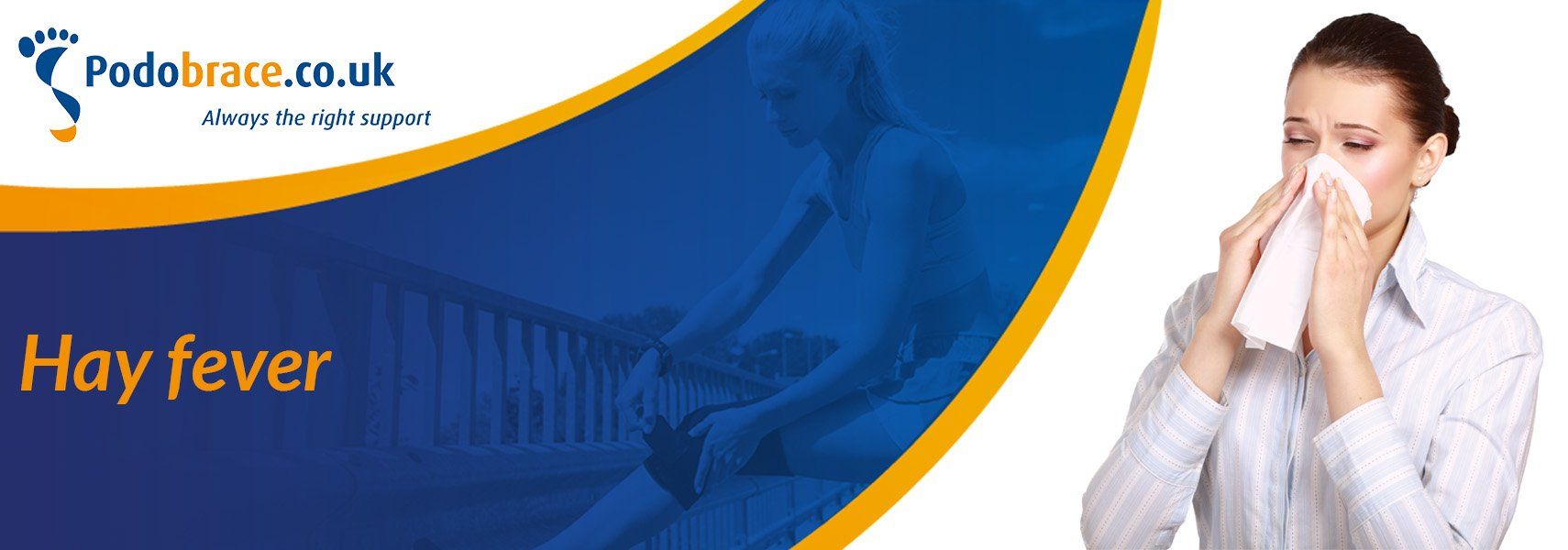Hay fever is an annoying condition that affects millions of people worldwide. Hay fever is simply an allergy to pollen from flowering plants or trees. It is also called pollen allergy. This is because the pollen grains are the cause of the allergy.
What are the symptoms of hay fever?
When you suffer from hay fever, the mucous membranes of the nose, mouth and throat are irritated. The mucous membranes of the eyes can also become irritated. In addition, people experience a number of symptoms that occur more frequently. We list them below for you.
- A sore throat and coughing
- Itching of the nose
- Sneezing
- Tiredness
- Feeling unwell, having a flu-like sensation
- Stuffy nose and runny nose
- Burning, watering and itching eyes
- Chest tightness
You may experience one or more of these symptoms when suffering from hay fever. The intensity and number of symptoms vary greatly from person to person. The duration of the hay fever period also varies greatly from person to person.
When are the pollen in the air?
Contrary to what many people think, airborne pollen occurs throughout the year. Hazel and alder trees, for example, bloom as early as January and already disperse pollen. However, most people suffer from hay fever during the months of May, June and July. This is when nature comes into full bloom and there is by far the most pollen in the air.
What types of pollen are there?
Pollen is found in plants and flowers and is white, brown or yellow in colour. Pollen pollinates these plants and flowers so that new ones can grow. They can be divided into light, dusty types and heavy sticky ones. Not all pollen causes an allergic reaction in people. Below, we list for you the pollens that most frequently provoke a reaction in people.
Plant pollen
The plants that cause hay fever symptoms are Plantain, Ambrosia and Sorrel. In summer and autumn, these plants are in bloom and cause symptoms.
Tree pollen
There are some trees that are notorious among hay fever sufferers. These are the alder, the birch and the hazel. These trees cause the most complaints. But all trees spread pollen.
Grass pollen
Of all the types of pollen, grass pollen is the one that bothers people the most. The period when grass pollen is in the air is relatively long because many species of grasses flower one after the other. This cycle starts in May. In June, when the grass is in full bloom, it is a difficult time for many people. Some people with a grass allergy may also develop a rash around the mouth when they eat certain things, such as different types of fruit, like apples, grapes, bananas, peaches and nuts.
Tips to combat hay fever, reduce hay fever symptoms
Fortunately, there are several things you can do when you suffer from hay fever. We list them for you below:
- When the air is filled with pollen, it is highly recommended to keep doors and windows closed. Do you want to air your house anyway? Do this in the morning. Then the air is still moist. You can also buy special insect screens that stop pollen.
- When you go outside, it is advisable to wear sunglasses. In this way, you protect the mucous membrane of your eyes and prevent irritation.
- Washing your hands regularly can also prevent a lot of irritation. If you wash them regularly, pollen will not reach your eyes or nose so easily.
- Coat the inside of your nose with a little Vaseline. This will make the pollen stick and thus cause less irritation.
- Do not hang laundry out to dry. The pollen sticks to it too. Rather hang your clothes inside to dry or put them in the dryer. This way, you can be sure that you won't get a nasty sneezing fit when you put on your clean clothes.
- Go outside when it is raining. The rain drives the pollen out of the air. Early in the morning, too, there is relatively little pollen. So if you want to go for a walk or do sports, put on your trainers and go out early!
- Keep an eye on the weather forecast for the latest news about pollen. Here you can see exactly which pollen is active at the moment. You may want to adjust your activities accordingly. Will it be a heavy day with pollen you are allergic to? In that case, stay indoors.
- You can also take pollen into account when choosing a holiday destination. Rather than going to the countryside, choose a destination in the mountains or on the beach. That way, you can be sure that you will suffer as little as possible from those annoying symptoms.
- Many people benefit from medical taping. This method involves applying strips of kinesiology tape to the body. This has a positive effect on the connective tissue and a calming effect on the allergic reaction mechanism. You will soon notice the difference after taping once. It is advisable to have the tape applied again after one week. The complaints will then decrease even further. If the symptoms are still present, tape will be applied a third time. Please note: the third taping will have less effect than the first and second. We advise you to wait 3 to 5 days before having new tape applied. This will give the best result.
Would you like more information on the use of kinesiology tape to combat those annoying hay fever symptoms? Then don't hesitate to contact us! Our team consists of medical specialists who will be pleased to help you and answer all your questions. They can be contacted via telephone, e-mail and live-chat.





